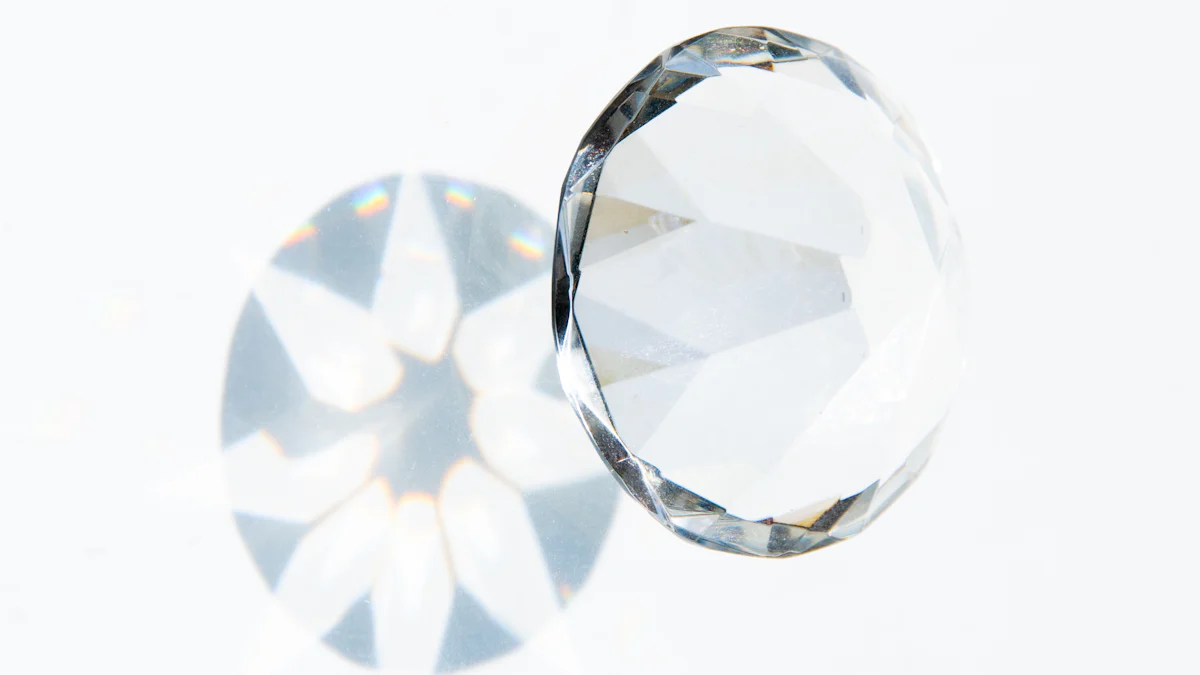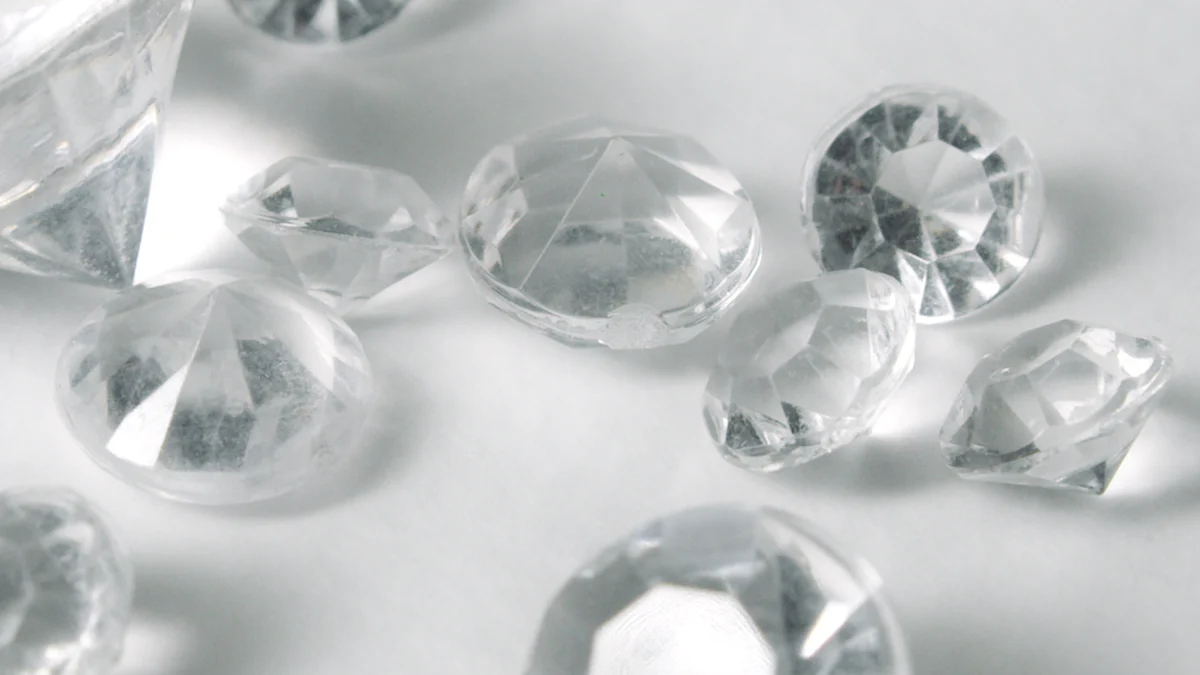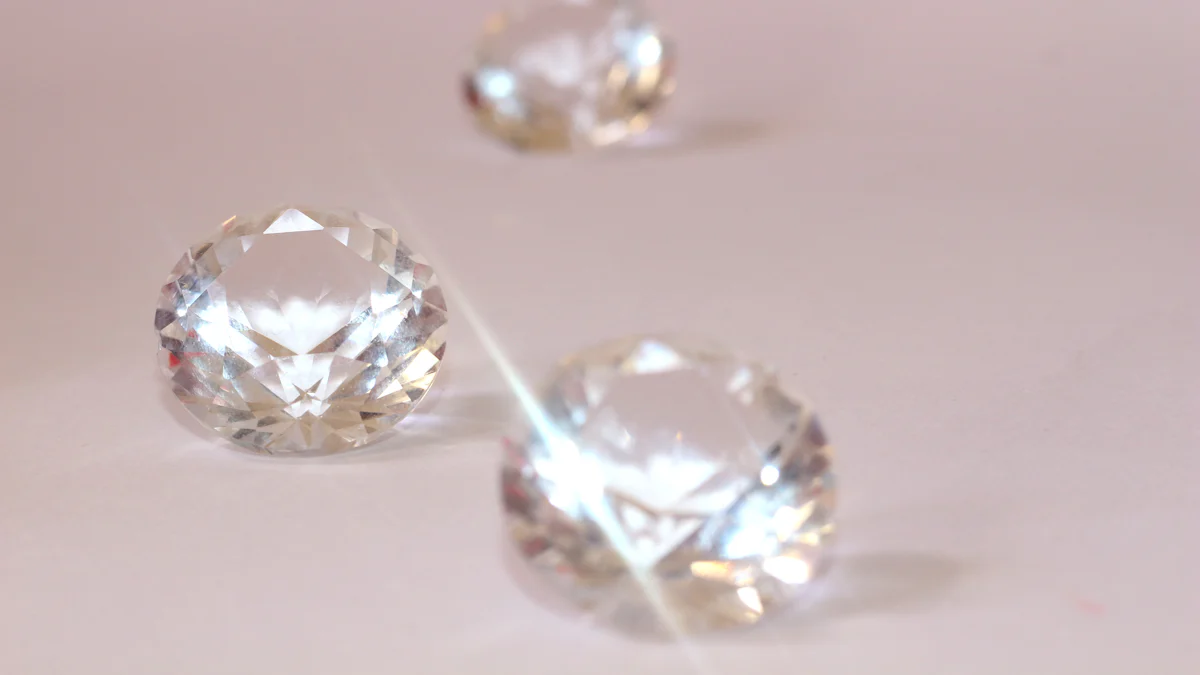How Diamond Clarity Impacts Brilliance and Appearance

When selecting a diamond, the vs clarity of diamond significantly influences its appearance and sparkle. Clarity determines how light travels through the stone, affecting its brilliance and overall allure. Higher clarity grades, such as VVS1, indicate fewer imperfections but come with a steeper price. For instance, a diamond with SI2 clarity might be priced at $6,500, whereas one with VVS1 clarity could cost $13,500—a 100% increase for just a few grade differences. Understanding the vs clarity of diamond is essential to strike the ideal balance between beauty and budget.
Understanding Diamond Clarity

What Is Diamond Clarity?
Diamond clarity refers to the absence of imperfections, both inside and on the surface of a diamond. These imperfections, called inclusions (internal) and blemishes (external), form naturally during the diamond's creation. While no diamond is completely perfect, those with fewer flaws are considered higher in clarity.
Clarity affects how light passes through the diamond, influencing its sparkle and brilliance. You might think clarity is the most important factor, but that's a common misconception. All the 4Cs—cut, color, clarity, and carat—work together to determine a diamond's beauty and value.
The GIA Clarity Grading Scale
The Gemological Institute of America (GIA) developed a standardized clarity grading scale that’s recognized worldwide. This scale ranges from Flawless (FL) to Included (I3), providing a clear way to compare diamonds.
| GIA Clarity Grade | Description |
|---|---|
| Flawless (FL) | No inclusions or blemishes visible under 10x magnification. |
| Internally Flawless (IF) | No inclusions visible under 10x magnification, only minor surface blemishes. |
| Very Very Slightly Included (VVS1, VVS2) | Inclusions are extremely difficult to see under 10x magnification. |
| Very Slightly Included (VS1, VS2) | Inclusions are visible under 10x magnification but not to the naked eye. |
| Slightly Included (SI1, SI2) | Inclusions are noticeable under 10x magnification and may be visible to the naked eye. |
| Included (I1, I2, I3) | Inclusions are obvious under 10x magnification and may affect transparency and brilliance. |
The GIA scale uses 10x magnification to evaluate diamonds, ensuring consistency across markets. It’s a reliable tool for understanding diamond clarity and making informed choices.
Flawless (FL) to Included (I3) Grades
Flawless diamonds are incredibly rare and expensive. They have no visible inclusions or blemishes, even under magnification. On the other hand, Included diamonds (I1, I2, I3) have noticeable imperfections that can affect their appearance and durability. Most diamonds fall somewhere in between, offering a balance of beauty and affordability.
Factors That Determine Clarity Grades
Inclusions and Blemishes
Inclusions are internal imperfections like tiny cracks, crystals, or clusters of pinpoints. Common types include:
- Feathers: Small cracks that look like feathers.
- Clouds: Groups of pinpoints that create a hazy effect.
- Needles: Thin, rod-like crystals.
Blemishes, on the other hand, are surface flaws like scratches or chips. These usually form during the cutting or polishing process. While inclusions impact all clarity grades, blemishes primarily affect the highest grades, such as Flawless or Internally Flawless.
The GIA evaluates clarity based on several factors:
- Size: Larger flaws lower the clarity grade.
- Number: More imperfections mean a lower grade.
- Location: Flaws near the center of the diamond are more noticeable.
Understanding these details helps you appreciate how clarity impacts a diamond’s appearance and value.
How Diamond Clarity Affects Brilliance and Appearance

The Role of Inclusions in Light Performance
Transparency and Light Reflection
Inclusions play a big role in how light interacts with a diamond. These tiny internal flaws can disrupt the path of light, affecting the diamond's sparkle and brilliance. When light enters a diamond, it reflects and refracts off its facets. However, inclusions scatter or absorb light, reducing the diamond's overall brilliance.
Higher clarity diamonds, with fewer inclusions, allow light to pass through more freely. This creates a stunning effect, enhancing both brilliance and fire. On the other hand, diamonds with lower clarity grades may have visible inclusions that block light, making the stone appear duller. If you're looking for a diamond with exceptional sparkle, clarity is something you can't ignore.
Clarity vs Diamond Brilliance
How Clarity and Cut Work Together
You might wonder how diamond cut affects brilliance alongside clarity. The cut determines how well a diamond reflects light, while clarity ensures that light isn't obstructed by flaws. A well-cut diamond with high clarity grades maximizes light performance, creating a dazzling sparkle.
For example, a diamond with a perfect cut but many inclusions won't shine as brightly as one with fewer flaws. Similarly, even a flawless diamond won't sparkle if the cut is poor. To get the best diamond brilliance, you need to balance both clarity and cut.
Visual Impact of Clarity
Transparency and Overall Appearance
Clarity doesn't just affect light performance—it also impacts a diamond's appearance. Higher clarity grades, like VVS or VS, have inclusions that are nearly impossible to see, even under magnification. These diamonds look clean and transparent, giving them a more elegant appearance.
In contrast, diamonds with lower clarity grades, such as SI or I, often have visible inclusions. These flaws can make the diamond look cloudy or less appealing. If you're aiming for a diamond that looks flawless to the naked eye, consider choosing a clarity grade that minimizes visible imperfections. This way, you can enjoy a beautiful diamond without breaking the bank.
Choosing the Right Clarity Grade
Eye-Clean Diamonds
When you're shopping for diamonds, you might hear the term "eye-clean." But what does it mean? Eye-clean diamonds have no visible inclusions or blemishes when you look at them face-up at a normal distance. This feature significantly boosts the diamond's beauty and value. Essentially, an eye-clean diamond appears flawless to the naked eye, making it a popular choice for those who want maximum brilliance without paying for a high clarity diamond.
To identify an eye-clean diamond without professional tools, inspect it under various lighting conditions. Daylight offers the best representation of a diamond's quality. Look at the diamond face-up and from different angles. While a jeweler's loupe can help, it's not necessary for determining if a diamond is eye-clean. Just make sure to examine the diamond away from bright sales lights and review it in natural daylight for the best clarity assessment.
Balancing Clarity with Other Factors
When choosing a diamond, it's crucial to balance clarity with other factors like color and carat weight. Here's how these elements interact:
- Cut is the most significant factor affecting a diamond's appearance and price.
- Carat weight greatly impacts price, with larger stones commanding higher prices.
- Color and clarity also affect value, but their impact varies. Clarity can lead to steep price increases at higher grades.
Focusing too much on one aspect, like carat weight, can lead to compromises in clarity and color, affecting overall value. A balance between the 4Cs—carat, color, clarity, and cut—is essential for maximizing value. For instance, opting for a slightly lower clarity grade might allow you to choose a larger carat size, which could be more visually appealing.
Budget-Friendly Clarity Options
If you're on a budget, don't worry. You can still find value in lower clarity grades. Diamonds with slight inclusions might not be eye-clean, but they can still offer good diamond clarity and sparkle. By choosing a diamond with a lower clarity grade, you can allocate more of your budget to other factors like carat weight or diamond cut, enhancing the overall appearance and diamond brilliance.
Practical Tips for Evaluating Diamond Clarity
Inspecting Diamonds with Magnification
When evaluating a diamond's clarity, magnification is your best friend. Jewelers and gemologists use a 10x magnification loupe, which is the industry standard for clarity grading. This tool helps you spot inclusions and blemishes that might not be visible to the naked eye. If you're serious about understanding a diamond's clarity, ask to use a jeweler's loupe during your inspection.
Focus on the diamond's eye cleanliness. Hold the diamond about six to twelve inches away and check if any imperfections are visible without magnification. While higher magnifications, like 40x or 50x, might seem tempting, they can strain your eyes and make it harder to see the entire stone. Stick to 10x magnification for the best results.
If you're unsure what to look for, pay attention to how inclusions affect the diamond's light performance. Do they block light or reduce the sparkle? A diamond with fewer visible flaws will have better brilliance and a cleaner appearance.
Consulting a Trusted Jeweler
A knowledgeable jeweler can make all the difference when you're evaluating diamond clarity. They use specialized tools, like microscopes, to examine the size, number, and location of inclusions. This detailed analysis helps them assign a clarity grade to the diamond.
When you consult a jeweler, ask them to explain how the inclusions impact the diamond's brilliance and overall appearance. They can also guide you on how clarity interacts with other factors like diamond cut, color, and carat weight. Here's a quick breakdown of these factors:
| Factor | Description |
|---|---|
| Clarity | Refers to the number of imperfections found inside the stone. |
| Color | Describes the hue of the diamond, affecting its overall appearance. |
| Cut | Refers to how well the diamond has been shaped and faceted. |
| Carat Weight | Indicates the size of the diamond, impacting its value. |
A trusted jeweler will help you balance these elements to find a diamond that fits your budget and preferences.
Comparing Diamonds Side by Side
Comparing diamonds side by side is one of the easiest ways to spot differences in clarity. Place two diamonds next to each other under the same lighting conditions. Look for variations in sparkle, transparency, and light performance.
Pay close attention to how inclusions affect each diamond's brilliance. Does one diamond appear cloudier than the other? Are the inclusions more noticeable in one stone? These comparisons can help you decide which diamond offers the best value for its clarity grade.
Don't forget to consider how the diamonds look in natural light. Bright showroom lights can mask imperfections, so step outside or use a neutral light source for a more accurate evaluation. By comparing diamonds directly, you'll gain a better understanding of how clarity impacts their overall appearance.
Diamond clarity plays a big role in a stone's brilliance and overall appearance. Fewer inclusions mean more sparkle, but clarity isn’t the only factor to consider. Balancing clarity with cut, color, and carat weight ensures you get the best value. Eye-clean diamonds often look flawless without the high price tag of top clarity grades. Always inspect diamonds in person and consult a trusted jeweler. They’ll help you weigh your options and avoid common mistakes, like focusing too much on clarity while overlooking cut or budget.
FAQ
What does "eye-clean" mean when buying a diamond?
An eye-clean diamond has no visible inclusions or blemishes when viewed with the naked eye. It looks flawless without magnification, making it a great choice for beauty and value.
Should I prioritize clarity over cut?
No, cut is more important than clarity. A well-cut diamond reflects light beautifully, even with minor inclusions. Focus on cut first, then find a clarity grade that fits your budget and looks clean to the eye.
Are lower clarity diamonds worth considering?
Absolutely! Lower clarity diamonds, like SI1 or SI2, often look eye-clean and cost less. You can save money and invest in a better cut or larger carat size without sacrificing beauty.
How can I check a diamond’s clarity myself?
Use a jeweler’s loupe with 10x magnification. Look for inclusions or blemishes, especially near the center. For a quick check, hold the diamond at arm’s length and see if it looks clean to the naked eye.
Do inclusions affect a diamond’s durability?
Yes, large or deep inclusions can weaken a diamond’s structure. Always ask your jeweler about the type and location of inclusions to ensure they don’t compromise the stone’s strength.
💡 Tip: If durability concerns you, avoid diamonds with feathers or cracks near the edges.
See Also
Exploring The Different Cuts Of Engagement Diamonds
Key Characteristics That Make A Diamond Ring Flawless
The Fascination Behind Diamond Dust Rings Explained

